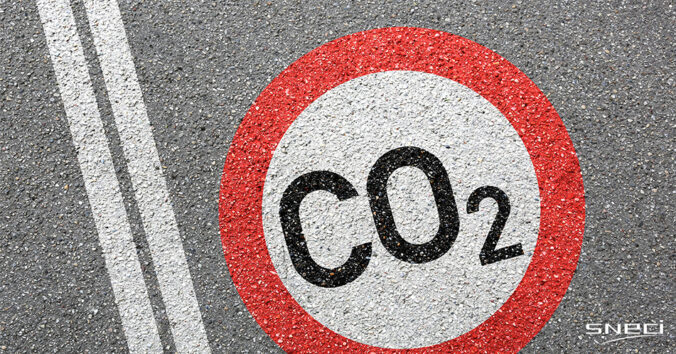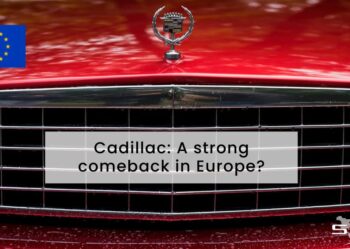How the EU’s “Fit for 55” climate package will impact the auto industry

On July 14, the European Commission adopted a set of proposals aimed at transforming the EU’s climate, energy, land use, transport, and taxation policies in a way that will ensure a 55% greenhouse gas emission reduction by 2030, compared to 1990 levels. The approved package of proposals is pivotal to making the European Green Deal come true and Europe becoming the world’s first climate-neutral continent.
Though, “Fit for 55” EU’s climate package alongside the Green Deal suggests reducing the CO2 emissions parallel to increasing the economic output of the bloc, some industries, notably the automotive, are concerned about the feasibility of such an ambitious target.
“Fit for 55” EU’s climate package
The recently adopted climate package includes an extensive and interconnected set of legislative tools “to deliver on the targets agreed in the European Climate Law and fundamentally transform our economy and society for a fair, green and prosperous future”.
The plan includes eight revisions of existing legislation and five brand-new proposals. Among the key ones for the automotive measures:
- Emissions Trading System (ETS): puts a price on carbon and lowers the cap on emissions for certain economic sectors.
- Effort Sharing Regulation (ESR): assigns specific emissions reduction targets to each Member State based on their Gross Domestic Product (GDP) per capita.
- Revised Renewable Energy Directive (RED): sets an increased target to produce 40% of energy from renewable sources only by 2030.
- Stronger CO2 emissions standards for cars and vans: lays down a plan to reduce the average emissions of new cars down to 55% from 2030 and 100% from 2035 (based on 2021 levels). In other words, all new vehicles registered in 2035 will have to be zero-emission. Consequently, the revised Alternative Fuels Infrastructure Regulation will require the Member States to expand charging capacity in line with zero-emission car sales as well as to install charging and fueling points at regular intervals on major highways.
- Carbon Border Adjustment Mechanism: puts a carbon price on imports of certain products, ensuring that EU’s emission reductions contribute to global emissions decline instead of pushing carbon-intensive production outside the continent.
Automotive industry & “Fit for 55”
The EU’s “Fit for 55” climate package plays a significant role in the development of the automotive industry in the next decade. It has a crucial impact not only on the carmakers with the production in Europe but also their overseas suppliers and millions of people employed in the sector.
In the past years, carmakers have already shown their interest in bringing emissions to zero by electrifying their ranges and making claims of going fully electric in the upcoming decade.
The recent years have also shown that a 55% cutback from 95 grams of CO2 per kilometer today to less than 43 grams of CO2 per kilometer in 2030 is not achievable with purely combustion engines. Therefore, the automakers decided to concentrate on improving already existing engines or creating the electrified ones rather than developing new and economical internal combustion engines from scratch.
Billions of euros have been invested in innovative and sustainable technologies, including more efficient internal combustion engines, hybrids, battery-electric, and hydrogen vehicles, alongside battery cell production and recycling.
Though, the majority of European carmakers support the idea of climate neutrality by 2050, banning a single technology solely does not seem like a rational way forward to achieving this goal.
“Within the context of the proposed technology restrictions from 2035 onwards, we urge all EU institutions to focus on innovation rather than mandating, or effectively banning, a specific technology,” states Oliver Zipse, BMW CEO and ACEA President.
Restricting the car supply to electric drivetrain exclusively in such a short period of time is also worrying as it doesn’t coincide with lagging consumer interest in alternatively-powered vehicles.
Another challenge related to the new emissions target is the lack of proper infrastructure to support the shift to electric mobility.
In order to support a surge in electrified vehicles, about six million public charging points would have to be installed before 2030, equal to more than 10,000 charging points installed every week from now on. Considering that there are less than 225,000 charging points available today, a shocking 27-fold increase in less than a decade is quite unrealistic. Finally, 70% of all EU charging stations are concentrated in just three countries, the Netherlands, France, and Germany, making the development of the charging infrastructure a challenging geopolitical issue.
The rapid increase in EV production will also require a local expansion in battery supply. Around 20 gigafactories would have to be built in Europe with a total capacity of 600 GWh of battery cells produced annually.
Earlier this year, the European Commission has already approved a €2.9 billion public support for a second pan-European research and innovation project along the entire battery value chain.
Big carmakers, energy providers, and start-ups are working together to build battery supply sufficient enough to cover European demand in the next decade. Automotive Cells Co. (ACC) will build three gigafactories in Douvrin (France), Kaiserslautern (Germany), and Termoli (Italy) by 2025. Volkswagen will launch six battery-cell factories in the EU, while Tesla will manufacture its brand-new structural battery pack in the “gigafactory” near Berlin. LG Chem and SK Innovation will concentrate their activities in Eastern Europe to take advantage of relatively low production costs.
Last but not least, the “Fit for 55” plan will have significant implications for the labor market. According to a study conducted by the ifo Institute on behalf of the VDA, the existing EU targets will affect about 215,000 jobs by 2030.
For the automotive industry, “Fit for 55” EU’s climate package means that the pace of electrification will need to be accelerated even more. The European Commission’s decision to reduce the CO2 emissions from new cars and vans by 100% by 2035 will make it practically impossible to sell internal combustion engine vehicles by the targeted year. Carmakers worry that such a drastic turn to electrified cars will correspond neither to the speed of infrastructural developments nor to customers’ eagerness to buy these cars.








